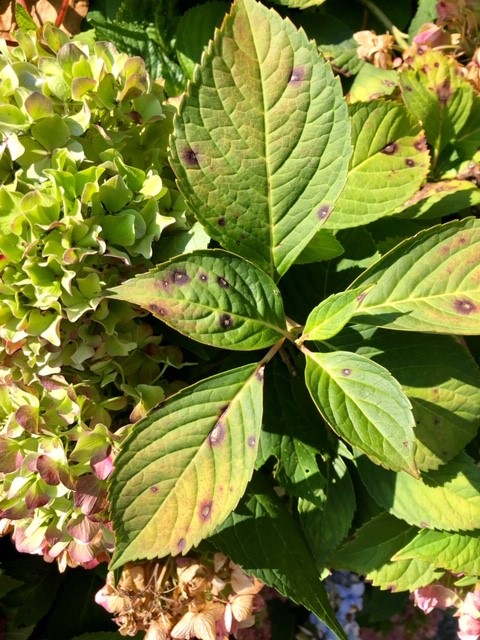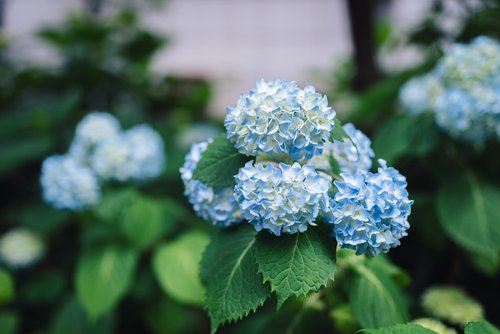The smart Trick of Hydrangea Leaves Turning Yellow That Nobody is Talking About
Wiki Article
Facts About Hydrangea Leaves Turning Yellow Revealed
Table of ContentsThe 15-Second Trick For Hydrangea Leaves Turning YellowThe Of Hydrangea Leaves Turning YellowMore About Hydrangea Leaves Turning YellowUnknown Facts About Hydrangea Leaves Turning Yellow
Big leaves typically look sagging during the mid-day warm. When they fall short to perk up in the night or still look wilted in the early morning, your plant might be overwatered.Get rid of the plant from the soil and prune out any roots that aren't white and swollen (plump). Replant in a brand-new area or work some sand into the dirt for better drain. Underwatering additionally triggers leaves to turn yellow with brown, crunchy edges. Do not try to fix the issue by sprinkling excessively.
Add a little bit of distilled water, stir the ingredients, and drain the additional water. Place a p, H screening strip in and wait for a reading.
Sphagnum moss or peat moss stops the dirt from compacting and betters soil drainage while also elevating the soil's acidity. You can spread sulfur chips in your hydrangea soil.
Fascination About Hydrangea Leaves Turning Yellow
This is one good reason to repot houseplants routinely (though there are others, such as origin growth for instance). It is also why houseplants call for a much more stringent feeding routine than many outdoor plants. When a hydrangea houseplant lacks nutrients, its leaves will be the first to reveal the indicators.
Most fluid plant food calls for dilution with water to reduce the concentration rather. You will certainly likewise require to feed the plant manually and regular intervals. When spring starts in March, it's the active growing season for lots of houseplants, including hydrangeas. At this point, you should begin your feeding routine. Apply fluid fertilizer to your hydrangea since this stuff, as I pointed out previously, is fast-releasing.
The dripline is the location situated under the foliage that is the furthest far from the center of the plant. So as opposed to using feed to the center of the plant it is best to concentrate it mostly in the external areas of the pot. If you would certainly rather use a slow-release fertilizer such as granular or spike fertilizer, after that cover either type with some dirt after you place them.
What Does Hydrangea Leaves Turning Yellow Do?
The hydrangea is surprisingly frost-resistant, as soon as temperatures start getting right into the 20s, the plant is in significant risk. If best site the temperatures remain in the reduced 10s, that danger is extra serious still. Undoubtedly this is more of a worry about outdoor plants so if you maintain potted hydrangea outside you should bring them indoors in really winter conditions and even consider transferring them inside for the duration of the wintertime.

A dehydrated hydrangea, A big issue with lots of houseplants is origin rot. Origin rot happens when you overwater a plant and due to the fact that it is such a common issue (particularly with succulents) lots of houseplant owners are scared of overwatering their plants. Hydrangeas call for more watering that the majority of various other typical houseplants and can become dehydrated when they are underwatered.
Examine This Report on Hydrangea Leaves Turning Yellow
Be absolutely sure that your hydrangea is dried out due to a lack of water and not due to it be offered too much water (a lot more on this later). Overwatering is a severe issue if you skimp on its water demands also a little bit, your hydrangea will be fast to show it., you will swiftly tell if the plant needs water. To obtain your hydrangea sprinkling behaviors on the right track, you need to be mindful concerning the dampness degrees in its check my reference dirt.
When you remove your finger from moist dirt it will certainly have tiny quantities of dirt residue stayed with it. Dry dirt will imply your finger comes out tidy or with dry soil that is conveniently surprised. If it's moist, and the plant has yellow fallen leaves after that the plant has likely been overwatered and you will need to follow the recommendations given in the section below.
Report this wiki page